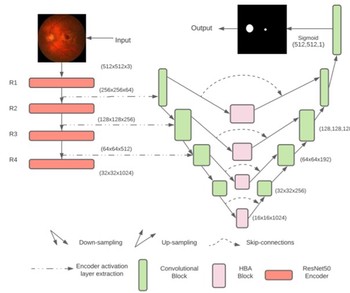We propose HBA-U-Net: a U-Net backbone with hierarchical bottleneck attention to highlight retinal abnormalities that may be important for fovea and optic disc segmentation in the degenerated retina.
Topic: Low Vision
Research Projects
U-Net with hierarchical bottleneck attention for landmark detection in fundus images of the degenerated retina
Shuyun Tang, Ziming Qi, Jacob Granley, Michael Beyeler MICCAI Workshop on Ophthalmic Image Analysis - OMIA ‘21
